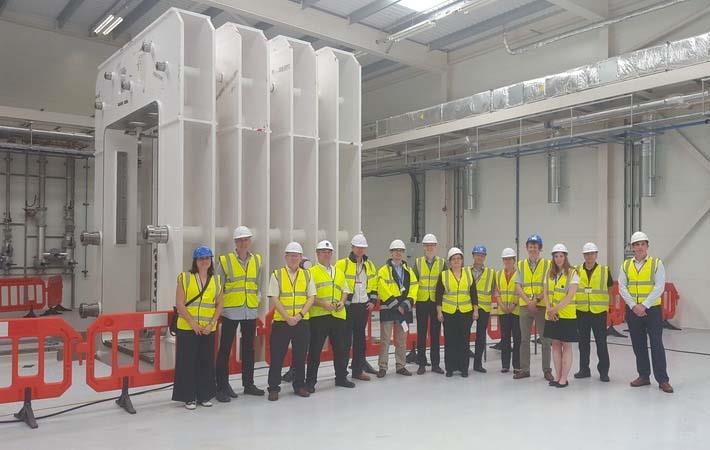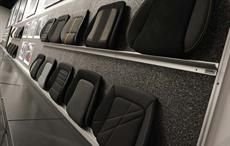The Composite Centre at the University of Sheffield Advanced Manufacturing Research Centre (AMRC) is installing a unique, high pressure press as part of a project to help luxury car manufacturer Bentley reduce weight and greenhouse gas emissions. The project will look at the precision and tailored production of the preform material to get weight reductions.
The AMRC is working with Bentley, Sigmatex, Expert Tooling and Automation, Granta Design, Cranfield University and Wakefield-based production equipment specialist Group Rhodes as part of the Lightweighting Excellence (LX) programme, backed by the government’s Advanced Manufacturing Supply Chain Initiative.The Composite Centre at the University of Sheffield Advanced Manufacturing Research Centre (AMRC) is installing a unique, high pressure press as part of a project to help luxury car manufacturer Bentley reduce weight and greenhouse gas emissions. The project will look at the precision and tailored production of the preform material to get weight reductions.#
Industry uses simple ‘preforms’ of composite material which are impregnated with polymer resin and cured to create composite material. These preforms are designed for low tack-time and production speed, but the resulting part uses more material than necessary structurally.
In order to capitalise on weight-savings offered by carbon fibre reinforced plastic (CFRP), the process strategy must be redefined. The project will look at the precision and tailored production of the preform material to achieve reductions in weight of component by up to 20 per cent.
This project seeks to find the middle-ground between automotive and aerospace, where the need for customisation meets high volume production, by the integration of flexible, automated material and manufacturing processes.
The AMRC will turn the optimised preforms of composite material into finished components in a new composite press. The press is currently being installed adjacent to the AMRC’s Factory 2050 facility on Sheffield Business Park, with production set to begin in 2017.
As part of the LX programme, the press will be completed by the development of an automated robotic cell by the AMRC and Expert Tooling and Automation. The cell will be used alongside the press for further industrial research into carbon fibre weaving and robotic placement technology used to make the preforms of composite material.
“This will be a unique facility that will improve our capabilities and also benefit the UK,” said Clara Frias, who is heading the project at the AMRC. “The technology will allow us to collect data to optimise the most appropriate preforming technologies, scaling them up for industrial use and allowing programme partners to share benchmarking data with the automotive sector and wider industries.”
The press will be a world first in terms of its size, capabilities and the level of monitoring and control it will provide the AMRC Composite Centre. It stands at six metres high by seven metres wide, allowing it to make several components at a time, using a process known as High Pressure Resin Transfer Moulding – or HP-RTM.
Once preforms have been placed inside moulds, both sides of the moulds will be sealed together in the press and resin will be forced in under pressure. AMRC researchers will be able to heat the pre-forms, the moulds or the plates of the press to speed curing and the combination of pressure and temperature means it could take no more than five minutes to produce a finished component. Hi-tech controls will allow researchers to tightly control temperature, pressure, resin flow and curing times, to find the optimum combination.
The project being carried out at the AMRC is one in the £7 million-plus LX Programme. Partners in the programme alongside the AMRC are Axillium Research, Bentley, Cranfield University, Emerald Automotive, Engenuity, Expert Tooling and Automation, Granta Design, Group Rhodes, Liberty Advanced Composites, LMAT, Nissan, Sigmatex, Surface Generation and Tilsatec. (SV)
Fibre2Fashion News Desk – India


